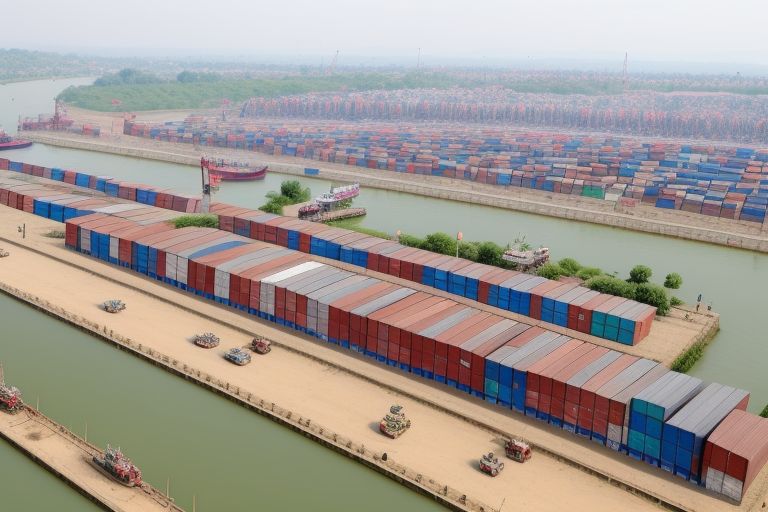The customs office of Sirsiya dry port in Birgunj has asserted that revenue from the current fiscal year’s first three months is as high as 12.7 billion Nepalese rupees. This impressive figure underscores the port’s crucial role in Nepal’s trade and economic landscape. The dry port situated on the Indo–Nepean border has improved the country’s import and export activities by transporting products and significantly enhancing the national income from the treasury.
Several factors have been advanced by officials at the customs office to explain increased revenue as explained below; The current enhancement in trade activity The general efficiency in handling customs procedures The improvement in physical facilities at the port. The benefits of these streamlined processes are that clearance times have been slashed, thereby eliminating potential snares while simultaneously encouraging firms to get more involved with the facility. This has not only inflated the government’s revenue but has also helped in the development of the economy in the region surrounding Birgunj.
The revenue realization within the dry port covers a variety of issues, namely import duties, export taxes, and other customs charges. From this, it is possible to see the extent of the diversity of the products that transited through the port toward and from Nepal as the country expands its international relations. The structure of exports and imports comprises a considerable share of agricultural produce, manufactured goods, and raw materials to express the country’s changing economy.
The global specialists in foreign trade have described this accomplishment as positive growth in the Nepalese external trade sector. The higher revenue source also suggests continued recovery from the effects of the global pandemic on the economy which is witnessing more business entities reopening as well as consumers’ spending increasing. This resurgence is especially important for Nepal, one of those countries that suffers from its geographical location, having no direct access to the sea and being highly dependent on cross-border trade for its well-being.
The model that has been applied to the Birgunj dry port has been said to be good, and policymakers and economists are looking at its success in replication in other border towns. The effective management and favorable position of the port provide useful information for creating other similar port facilities in the country. It is about such improvements that such initiatives could help enhance the Nepalese skills of trading and the economy in the long run.
It has been observed that enhanced operation of the dry port has brought a favorable change in the performance of the collaborated local businesses in Birgunj. Due to the increased import and export activities through the port, many associated business giants such as traders, logistics firms, and service providers have been established that offer employment to its citizens and encourage many to become business people in that region. This economic impact cut across other areas around the port and was advantageous to the communities in development.
For this reason, the customs office has stressed its capability to sustain the upward trend in revenue collection even further. There are the further proposals of the development of the port as the high technologies in the sphere of the cargo examination and handling will be applied. These upgrades are intended to improve security aspects at the same time as increasing throughput rates, and thus make the port a still more favourable destination for trading and investment.
It is however regrettable that environmental factors have not been left out by the port. To reduce the environmental impact of the growing business activities of the authorities have adopted several programmes related to environmental protection. Such measures included; better waste disposal systems, encouragement of the use of environmental friendly packaging materials and better incentives to low emissions vehicles in transport network. Thus, it can be stated that the efforts made testify to the pragmatic concept of sustainable economic development.
With Birgunj upgrading its position as Nepal’s economic hub, the government is seeking strategies to achieve this success towards the social and economic development of the nation. The plan is under development to spend a part of the extra revenue stream on infrastructure, education, and healthcare in the surrounding areas. This approach focuses on using policy instruments in endeavouring to make the level of gains from trade more consistent throughout the entire population.
The miracle of Birgunj dry port has not eluded the attention of Nepal’s international counterparts. Visiting countries and international organizations have shown a willingness to partner with the port on future development initiatives. These potential partnerships could bring in additional expertise, technology, and funding, further enhancing the port’s capabilities and its contribution to Nepal’s economy.


